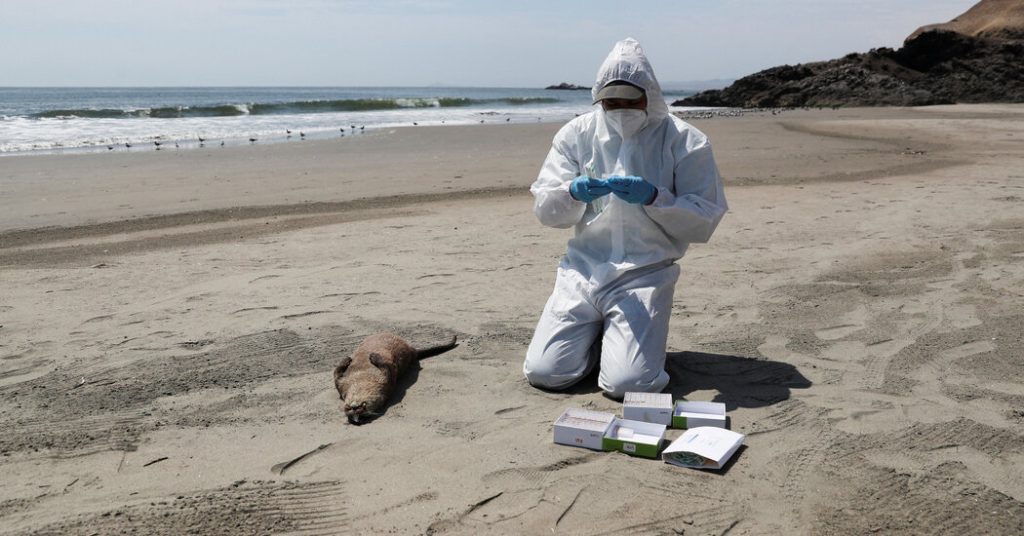Dr. Marcela Uhart, a wildlife health program director at the University of California, Davis, witnessed a devastating scene on the beaches of Argentina’s Valdés Peninsula in October. During peak breeding season, instead of lively elephant seal harems, there were carcasses of dead and dying seal pups. The cause was H5N1, a highly pathogenic strain of bird flu that had already killed thousands of South American sea lions. The virus had wiped out over 95 percent of the seal colony’s young animals, leaving behind a heartbreaking scene of destruction.
The H5N1 virus, which originated in China in 1996, has caused bird flu outbreaks in various parts of the world, affecting both domestic and wild birds. However, the most recent strain of the virus has shown an unprecedented ability to infect a wide range of animals, including marine mammals like seals and even dairy cows. The virus’s expanding host range is a cause for concern as it indicates that it may be adapting to infect mammals, including humans. While a human pandemic is not guaranteed at this point, the evolving nature of the virus raises uncertainties about its potential impact on public health.
The virus spread rapidly through South America, resulting in the deaths of hundreds of thousands of seabirds and sea lions. The sea lions exhibited abnormal behavior and experienced severe health complications, such as convulsions and paralysis. Genetic analysis suggests that the virus likely spread directly among marine mammals, rather than from infected birds. The close contact among animals in crowded breeding colonies provided ample opportunities for the virus to jump between species, posing a significant risk to human health if it evolves further.
Flu viruses are notorious for their ability to mutate and adapt to new hosts. The H5N1 virus has been circulating for decades, evolving through reassortment with other flu viruses and acquiring mutations that enable it to infect a wide range of species. The virus’s ability to infect mammals, including humans, raises concerns about the potential for a future pandemic. Effective surveillance and monitoring of the virus’s spread are critical to identifying and responding to emerging threats promptly.
The current spread of H5N1 among dairy cows highlights the need for improved surveillance and communication between government agencies and international partners. The risk of the virus jumping to humans, particularly through pigs, underscores the importance of proactive measures to prevent zoonotic transmission. While the U.S. is prepared for an influenza pandemic with stockpiled vaccines and antivirals, the unfolding situation with H5N1 in animals emphasizes the need for vigilance and collaboration to mitigate the risk of a potential human outbreak.
As the virus continues to evolve and adapt to new hosts, scientists and public health officials must remain vigilant and prepared to respond effectively to emerging infectious diseases. The rapid spread of H5N1 among diverse animal species underscores the urgency of implementing proactive measures to prevent zoonotic transmission and protect human health. Cooperation, transparency, and timely information sharing are essential components of an effective response to potential pandemics, ensuring that public health measures are deployed swiftly and efficiently to mitigate the risk posed by novel pathogens like H5N1.


